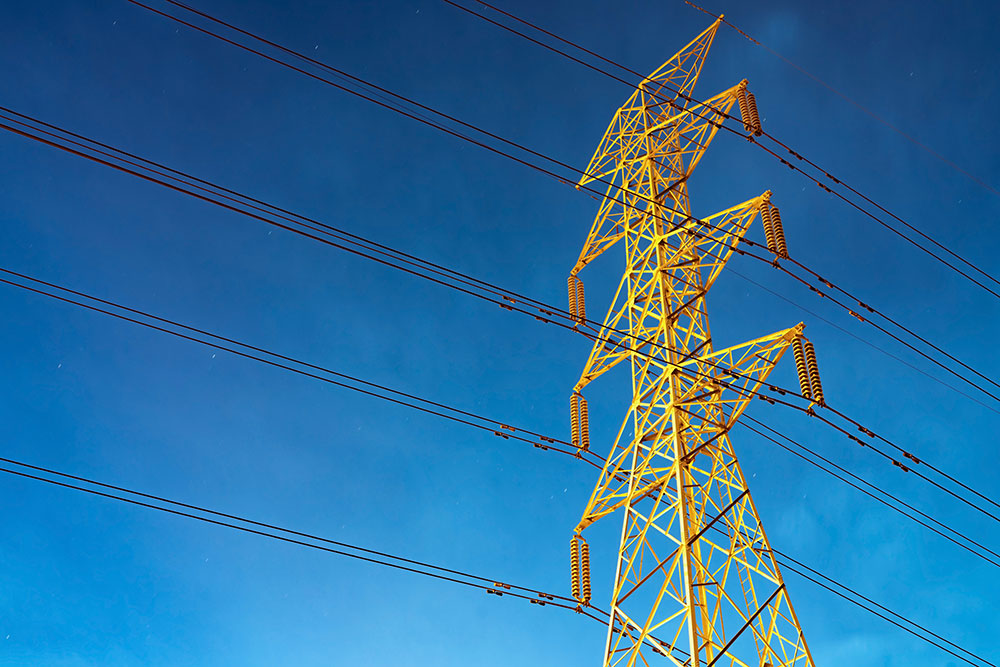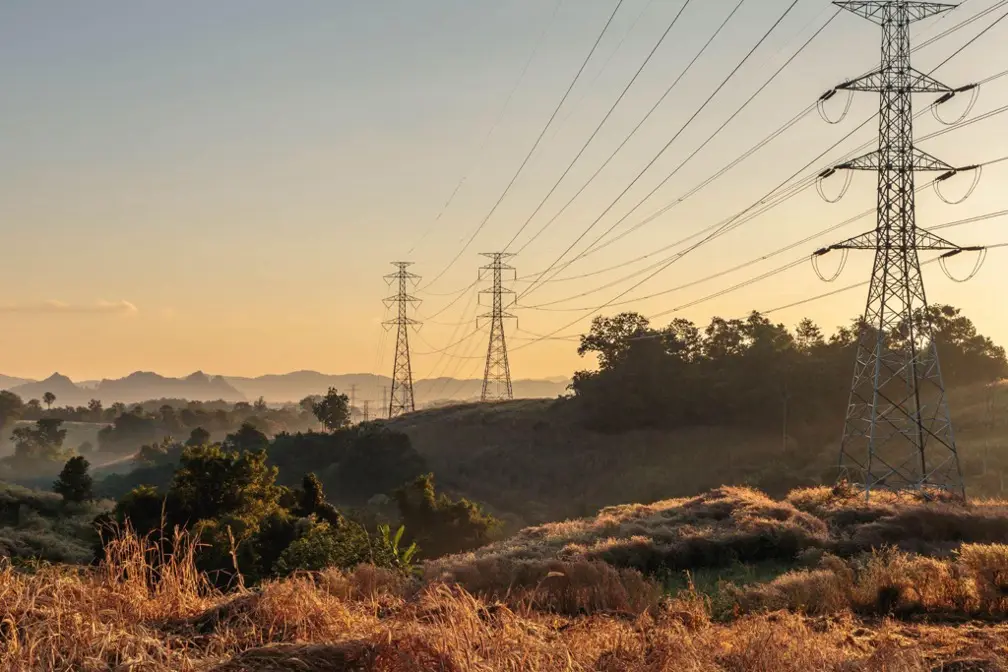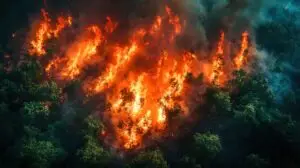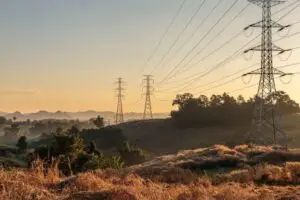Essential Strategies for Wildfire Prevention by Electric Companies
The escalating frequency and intensity of wildfires have expanded the role of electric companies from provider of power into protector of communities. Catastrophic blazes, fueled by climate change and exacerbated by aging infrastructure, are now an ever-present threat.
To combat this, utilities are having to adopt a multi-faceted approach—with vegetation management and grid hardening at its core. In this article we’ll examine these fundamental strategies in detail, and how technology platforms like UNITI Workspace are helping these strategies achieve faster and more effective results.
The Rising Tide of Wildfire Risk
It’s an unfortunate characteristic of recent years that extreme weather events, including wildfires, are becoming more frequent and severe. While this surge in wildfire risk poses major challenges to electric companies and the communities they serve, the inadequacy of current insurance products and funding gaps are worsening the situation. Homeowners and local governments are ill-equipped to handle the financial burden of wildfire mitigation.
In this environment, electric companies face mounting pressure to reduce the risks posed by their equipment, while simultaneously investing in resilient, clean energy infrastructure. The need for a holistic approach, balancing risk mitigation and infrastructure development is urgent, to say the least.
When it comes to reducing risks in this environment, the ‘vegetation factor’ is a major variable in the equation.
The Benefits of Vegetation Management
One of the most effective strategies for preventing wildfires ignited by electric infrastructure is trimming or removing the trees and plants within transmission and distribution rights-of-way (ROWs). Overgrown vegetation, especially in dry, fire-prone regions, poses a significant risk. Trees and branches that come into contact with power lines can cause sparks, igniting dry brush and rapidly escalating into large-scale wildfires.
Effective vegetation management involves:
Regular Inspections and Trimming
Implementing a structured schedule for routine inspections helps detect vegetation encroaching on power line clearances. These inspections, conducted by trained professionals, identify trees and branches that pose a direct threat. Timely trimming, using specialized equipment, prevents potential contact, reducing the risk of sparks and subsequent wildfires.
The Removal of Hazardous Trees
Identifying and removing dangerous trees is a central aspect of the process. Dead, diseased, or structurally compromised trees pose a major risk, with an increased probability that they may fall onto power lines, especially during high winds or storms. Trained arborists assess tree health and stability, marking hazardous trees for removal. This process not only cuts the immediate risks but also reduces long-term fuel loads, creating a safer environment for utility infrastructure.
Herbicide Application
Using targeted herbicide applications offers an efficient way to control vegetation growth within rights-of-way. Precise application techniques, minimizing environmental impact, reduce the need for frequent manual trimming. This approach effectively manages invasive species and reduces overall fuel loads, again improving wildfire prevention efforts.
Maintaining Clearances
Ensuring adequate clearance between vegetation and power lines is another key area. This involves establishing and maintaining defined clearance zones, considering factors like voltage and regional vegetation growth rates. Regular inspections and trimming are essential to maintain these clearances, preventing contact that could lead to sparks or downed lines.
Species Selection
Promoting the use of fire-resistant plants in landscaping near power lines is a proactive approach to wildfire mitigation that involves the community at large. Educating homeowners and developers about suitable vegetation choices, such as sedum, agapanthus, Western columbine, and yarrow, reduces the risk of flammable materials near critical infrastructure. Selecting species with low flammability, drought tolerance, and slow growth rates contributes to a more fire-resilient landscape.
Although some of these approaches to vegetation management may seem straightforward, timely access to ROWs in order to pursue them is vital. Obstacles to access, such as bureaucratic delays or landowner disputes, can hinder vegetation management and increase wildfire risk in the process. As a result, electric companies need to work closely with landowners, local governments, and regulatory agencies to ensure unimpeded access to ROWs for maintenance and operations.
Grid Hardening – Building a Resilient Infrastructure
While vegetation management addresses the fuel side of the wildfire equation, grid hardening focuses on strengthening the infrastructure itself. Grid hardening involves a range of measures designed to make power lines and equipment more resistant to wildfires and other extreme weather events.
Key elements in grid hardening include:
Covered Conductors
Transitioning to covered conductors, which feature an insulating layer, is vital for preventing sparks when wires touch vegetation or debris. This upgrade significantly reduces the chance of wildfire ignitions, as bare wires are a major culprit, which we’ll cover in more depth in the next section.
Pole Reinforcement and Replacement
Replacing or reinforcing poles with durable materials like steel or composites strengthens the grid against extreme weather and fire risks. Aging or damaged poles are vulnerable, and upgrading them with braces or wraps significantly increases stability.
Equipment Upgrades
Upgrading electrical equipment such as transformers and switches with fire-resistant components and protective enclosures is another key aspect of minimizing ignition risks. Enhancing these components with modern, sturdy materials and designs not only reduces their fire risk but increases their operational life.
Selective Undergrounding
Strategically placing high-risk power lines underground is, of course, a highly effective way of sidestepping wildfire risks. It’s costly to do this, however. That said, it’s a powerful and ultimately cost-effective approach to take, particularly in populated or fire-prone regions.
Automated Reclosers with Sensitive Settings
Implementing reclosers with sensitive settings allows for immediate power shutoff upon fault detection, preventing repeated sparking. Adjusting these devices to react quickly to potential ignition events is a hugely effective way to rescue risk.
The Importance of Covered Conductors

Among the many grid-hardening measures available to utility firms, covered conductors are possibly the most important of the strategies, particularly in regions prone to wildfires. These insulated power lines are a direct response to the inherent vulnerability of traditional bare conductors, which, when compromised, can become a major ignition source.
The fundamental principle behind covered conductors is the encasement of the conductive material in a protective, non-conductive layer, effectively preventing the electrical discharge that leads to sparks. This simple yet crucial design modification dramatically reduces the potential for vegetation and debris to trigger fires.
The benefits of this technology extend beyond mere fire prevention. Their sturdy design enhances grid reliability, with the insulation providing a buffer against physical damage, allowing the lines to withstand impacts from falling branches or debris that would otherwise lead to power outages. This improved durability helps utility firms deliver a more consistent and dependable power supply, particularly during extreme weather events.
Beyond this, the adoption of covered conductors dramatically improves safety for both utility workers and the public. The insulation acts as a barrier, reducing the risk of accidental electrical shocks during maintenance or repair work.
While the initial investment for covered conductors may exceed that of traditional bare wires, the long-term advantages are profound. The reduction in wildfire-related damages, the enhanced grid reliability, and the improved safety profile make covered conductors one of the most cost-effective and essential investments for electric utilities.
A Coordinated Approach – Stakeholder Collaboration
While electric utility companies may be on the front lines when it comes to wildfire prevention, it’s not solely their responsibility. A coordinated approach is required that involves all stakeholders.
Federal, State, and Local Governments: To effectively combat wildfires, federal, state, and local governments need to focus on securing funding for mitigation projects, including infrastructure enhancements to comprehensive vegetation management. Central to this effort is the enactment of policies that actively incentivize preventative measures, while streamlining permitting processes to expedite critical work. Moreover, smooth coordination of land management across jurisdictional boundaries is essential to reduce fuel loads and bolster overall readiness.
Landowners: Private landowners play a key role in wildfire prevention. By granting smooth access for essential vegetation management within rights-of-way, they directly contribute to grid safety. Open communication and cooperation between landowners and utilities is an essential factor in the wider risk management picture.
Homeowners: Individual homeowners are a vital line of defense against wildfires. By implementing defensible space practices—clearing brush, creating fire-resistant landscapes—they significantly reduce the risk to their own properties and surrounding areas. Proactive vegetation management, coupled with staying informed about local fire safety guidelines, helps residents to take responsibility and raises community awareness about wildfire risks and practical solutions.
First Responders: During wildfire events, close coordination between fire departments, emergency services, and electric companies is vital. Real-time information sharing, clearly defined communication protocols, and collaborative suppression strategies all contribute to a far more effective response. Joint training and drills are crucial to this, improving operational efficiency and minimizing damage to both critical infrastructure and the communities the infrastructure serves.
The Role of Technology and Data
The nature of wildfire prevention has been fundamentally changed by advanced technologies and a more varied and in-depth range of data points. No longer limited to reactive measures, utility firms now possess the tools they need to anticipate, predict, and proactively mitigate wildfire risks with remarkable precision.
Remote Sensing
Using satellite imagery and LiDAR technology allows for an in depth analysis of vast terrains. These tools provide detailed data on vegetation density, fuel loads, and topographic features, crucial for identifying areas with heightened wildfire risk.
Weather Monitoring
Implementing advanced weather stations provides real-time data on critical meteorological conditions. By tracking temperature, humidity, and wind speed, utilities can generate accurate fire risk assessments. This proactive monitoring allows for the timely implementation of preventative measures, such as power shut offs or increased patrols, during high-risk periods.
Fault Current Indicators
Deploying fault current indicators along power lines enables the rapid detection of abnormal electrical currents. These devices identify potential faults that could lead to sparks and ignite wildfires. Instantaneous alerts allow utilities to quickly respond to and rectify issues, minimizing the risk of ignition.
Acoustic Sensors
Implementing acoustic sensors enables the detection of subtle sounds indicative of electrical anomalies, like arcing. With the anomalies having a distinct sonic signature, sensors provide early warnings of potential ignition sources, allowing for proactive maintenance. This technology is particularly valuable in remote areas where visual inspections are difficult to perform.
Video Analytics
Employing cameras equipped with AI-powered video analytics allows for continuous monitoring of high-risk areas. These systems detect smoke plumes, flames, and other signs of fire in real-time, with automated alerts enabling far quicker responses. Smart video technologies are particularly valuable when it comes to detecting fires in their early stages., giving both utilities and firefighting teams a much better chance to stem fires before they spread.
How Thread’s UNITI Workspace Can Help

Of all the strategies that modern wildfire prevention demands, arguably the most important is the shift from fragmented data to unified intelligence. Utility companies can now operate a centralized platform where dynamic dashboards, fueled by real-time data, replace antiquated reports.
This is the operational reality that Thread’s UNITI Workspace delivers. Utilities gain a comprehensive, real-time view of their operational landscape, enabling them to anticipate threats, optimize resource allocation, and enhance overall grid resilience. Transcending simple data collection, UNITI Workspace transforming raw information into a strategic asset that allows fast and effective proactive decision-making.
From Scattered Data to Unified Intelligence
Data Consolidation: Silos disappear as diverse data on vegetation growth, weather patterns, grid health, and more, converge into a single, accessible view.
Visualized Risk: Interactive maps and dashboards paint a clear picture, highlighting vulnerable zones and emerging threats with intuitive clarity.
Collaborative Response: Removing communication barriers, UNITI Workspace promotes smooth coordination between field teams, control centers, and community stakeholders.
Automated Efficiency: Routine tasks are replaced by streamlined workflows that free up valuable time for strategic action.
Predictive Power: Our platform provided the seamless data management needed for advanced analytics, enabling utilities to anticipate risks and optimize mitigation efforts before disaster strikes.
Centralized incident management: A single view of all incidents and supporting data, allows for faster and more effective responses.
Grid hardening and vegetation management may be key measures in wildfire mitigation, but the data that drives these measures can make the difference between a costly and time consuming strategy and one that delivers safety and operational results dependably and cost-effectively.
To learn more about UNITI Workspace and how the platform can transform your fire mitigation strategies, you can contact us here.



